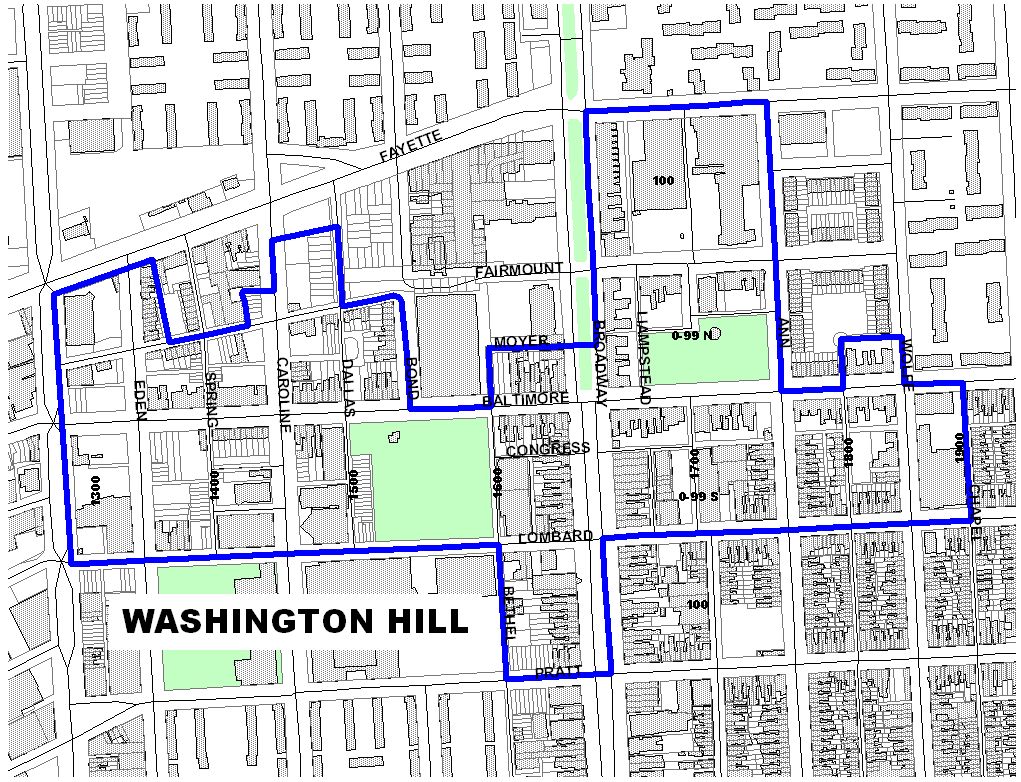Washington Hill
Description
 Washington Hill is an urban district containing well over 150 structures bounded roughly by Lombard and Pratt Streets on the south, Fayette Street on the north, Chapel and Ann streets on the east and Eden Street on the west. The community contains predominantly residential structures dating from the 1790's to the early 1900's, with some commercial, religious, and institutional buildings and an urban park.
Washington Hill is an urban district containing well over 150 structures bounded roughly by Lombard and Pratt Streets on the south, Fayette Street on the north, Chapel and Ann streets on the east and Eden Street on the west. The community contains predominantly residential structures dating from the 1790's to the early 1900's, with some commercial, religious, and institutional buildings and an urban park.
The district is characterized by two and a half to three story red brick row houses with sloped or flat roofs. Limestone steps, wood cornices, and limestone, brick, or wood embellishments are common elements of structures in the district. Some buildings have elaborate mansard roofs, decorative wrought ironwork, and intricate stained glass transoms. The range of architectural styles include Federal, Queen Anne, Italianate, Second Empire, and Victorian structures.
Significance
Washington Hill, which takes its name from the old Washington Medical College, is significant for its rich variety of architectural styles. This variety is of great value as a living row house museum. The area's significance is unquestionable in that its architecture, landscapes, and street plan represent key periods in the development of Baltimore. Its embellishments, including formal monuments, painted screens, and ornamental iron provide historic and scenic value.
The heritage of the Washington Hill community is also represented in its numerous storefront buildings, which appeared due to the need for shopkeepers and tradesmen to live near their businesses. Shopkeepers were able to prosper in this area due to the development of building and loan associations, many of which were related to the religious institutions and ethnic groups of the area. Some of the significant religious institutions in the area include St. Michael's Catholic Church, Eden Street Synagogue and Trinity Russian Orthodox Church. Washington Hill was a remarkably heterogeneous community including both wealthy merchants and laborers. Some of the architecturally outstanding buildings include the Hugg House (1866) and John Hancock's Apothecary, which has been operating as a drugstore for 125 years.
Beyond its architectural gems, Washington Hill is also notable for the Broadway Parks, developed between 1850 and 1860. Broadway Parks was one of Baltimore's most advanced urban planning projects and an early attempt at landscape/street planning for urban boulevards.